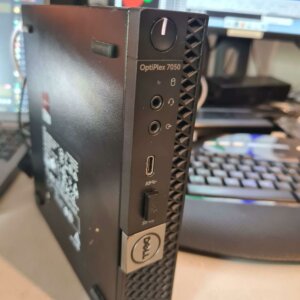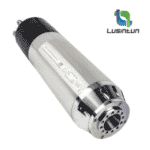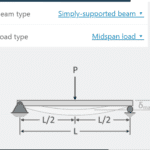Don't worry, We do not spam! By clicking to subscribe, you agree to our privacy policy.
Tool setter : Measuring tool length [#1 ultimate guide]
![Tool setter : Measuring tool length [#1 ultimate guide] 11 touch off tool setter tool length measurement](https://cncrouterinfo.com/wp-content/uploads/2022/10/PIC-for-FA-11-HEID-TT460_Anw01_RGB-web_v2-scaled.jpg)
Final workpiece accuracy is often dependant on how accurately you can measure and compensate for tool length difference between tool changes.
CNC controllers require understanding of the exact length of tools in order to compensate for any tool length differences between milling cutters.
In this article, I go over the various style of tool length sensors available. Evaluating aspects such as accuracy, versatility, and cost.
Lower cost mechanical tool setter
The lower-cost mechanical tool setter such as the HLTNC CNC tool length sensor which I reviewed here is the most popular method of tool length measurement for DIY hobby or semi-pro CNC machines.
![Tool setter : Measuring tool length [#1 ultimate guide] 1 tool setter aliexpress tool length measurement](https://cncrouterinfo.com/wp-content/uploads/2022/10/20221005_124420-1024x1024.jpg)
There are various models available on Aliexpress and at other sources of these lower cost mechanical tool setters. Internally they are all constructed similar. There is a plunger where the end mill presses down and internally there is a switch that gets contacted when the plunger is moved down by a certain distance.
The repeatability of this style of tool setter has been shown and tested to be within +-0.01mm – 10um. For most DIY, hobby, and semi-pro CNC machining applications this is suitable.
However you will face some challenges with irregular shaped milling tools such is index-facemills or bigger tools that exceed the size of the plunger.
In addition this style of mechanical tool setter does not allow you to measure the tool width.
The elecrtical connection of this type of tool length sensor is quite easy. It with either have an NC or NO type switch internally which allows you to connect it to your cnc controller board such as an UCCNC or Mach 3 breakout board.
![Tool setter : Measuring tool length [#1 ultimate guide] 2 comparison NO and NC contact](https://cncrouterinfo.com/wp-content/uploads/2022/10/no-vs-NC-contact.png)
Non-contact tool setter
Non contact tool setting system often recognizable the U shape is one of the most common methods for automatic tool length measurement for industrial machines.
![Tool setter : Measuring tool length [#1 ultimate guide] 3 reneshaw tool length sensor non contact tool length measurement](https://cncrouterinfo.com/wp-content/uploads/2022/10/5200-14676001-1024x1024.jpg)
These non-contact tool setter work by sending a small laser beam from the sending fork to the receiver fork on the other side.
Due to its non-mechanical nature of it, the accuracy and repeatability of it tool length measurement is generally around 1 – 2 um for the more affordable models such as the Sick WF2. On the higher range of the spectrum, the Renishaw NC4+ achieves a repeatability specification of +-0.5um for smaller tools and +-0.75um for larger tools
An additional benefit of this type of non-contact tool length sensor is that it allows irregularly shaped tools such as big insert-based face-mills to be accurately measured. This can often be a challenge when using a contact-based tool setter.
In addition to that you can do width measurement of an milling tool. This is especially beneficial to capture catastrophic damage to a milling tool or to verify that the physical tool matches the tool size as set in the cnc controller such as linuxcnc or UCCNC.
This width measurement is usually less accurate than length measurement. One can generally expect about 20 – 50 um measurement accuracy using a non-contact
![Tool setter : Measuring tool length [#1 ultimate guide] 4 non-contact tool length sensor cnc automatic on](https://cncrouterinfo.com/wp-content/uploads/2022/10/a0W4z00000B8uIfEAJ-Laser-Tool-Setter-LTS3565.jpg)
Endmills and other milling tools are often not completely flat on the bottom face due to cutting edges etc. To measure the longest point of the endmill accurately this kind of non-contact tool length sensor requires the spindle to turn (~1000 rpm) while measuring the lowest point of the milling tool.
On the second hand market such non-contact tool setters are available from just 10$.
Popular term for this on european ebay is “Gabellichtschranke” which translates to “Fork light barrier” – one example of this is the Balluff BGL000A which you can often find new or used for 20 – 40$
Premium – mechanical tool setter
In comparison to lower-cost mechanical tool setters that are often used in the DIY CNC community, there is also a premium style available that can achieve repeatability numbers comparable to or better than non-contact tool setters.
![Tool setter : Measuring tool length [#1 ultimate guide] 5 2ec0f3059a904efb8b0b2c0c35238187](https://cncrouterinfo.com/wp-content/uploads/2022/10/2ec0f3059a904efb8b0b2c0c35238187-1024x680.jpg)
Renishaw OTS 3D touch trigger tool setter is one of such premium mechanical tool setters.
While listed as a mechanical tool setter in this article, internally it is just like the non-contact tool setter optically based to achieve better stability and accuracy numbers.
Brand new the Renishaw OTS 3D tool setter costs approximately 2000$ but used these can be found for about 500 – 1000 $ on places like ebay.
The Renishaw OTS 3D tool setter lits a repeatability specification of 1.00 um.
There are a few copies of this design on aliexpress but they are still quite pricey at 1000+ $. At that price point, I would advise to look at second-hand options in the west.
Conclusion
In this article, the various kinds of tool length setters are described with each having their pro and cons. For most hobbies and DIY use, a lower cost mechanical tool setter will be sufficient.
Looking for more versatility and better accuracy? have a look at (second hand) non-contact tool setters.
Are you a job-shop that is running VMC all day long, with coolant etc – for you the premium 3D mechanical tool setters for a brand such as Renishaw might be the right option.







